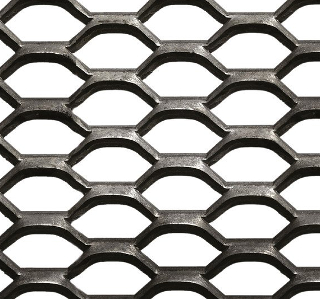In the arena of metals and fabrication, appearance may be almost everything. Perforating in a few respects, is sort of of an art form. It has been manufactured using perforating presses for above a century. As times change, metal perforating evolves too. Some of the principles behind perforating remain constant, always have and always will, although some have progressed consistent with advances in metallurgy and overall technology. Due to cnc programming and computer aided design, non-traditional patterns are becoming available opening the doors for unlimited possibilities including perforated logos and perforated images that resemble anything you can imagine. All in all, the perforated patterns have changed, the quality of metals and alloys have improved, as well as the process of perforating metal has become much more efficient. But lets talk about the perforating patterns specifically.

Every perforated pattern obviously begins with the shape with the hole. A few examples of hole shapes are circular, elliptical, oblong, oval, square, rectangular, hexagonal, octagonal, clover leaf, and triangular. Custom hole shapes can also be found by designing a custom perforating tool. Each hole shape brings its aesthetic characteristics. Design of the holes could affect the strength of the perforated material. For instance, holes may be perforated in a straight pattern with each hole in perfect line both horizontally and vertically around the metal sheet. Rows of holes may also be staggered which is common practice to keep up strength in the finished product. The straight and staggered patterns create two entirely different appearances. When it comes to strength however, a round hole perfed in to a staggered pattern creates the best overall strength versus open area. Round holes can be perfed more efficiently and economically than any other hole shape since the dies and punches required to punch a round hole will be the easiest and least expensive to make. Round hole tooling will even last longer and is easier to maintain. A round hole and staggered pattern is the most commonly commercially perforated pattern just for these reasons.
The outlet pattern actually includes a direction over a standard made in huge amounts expanded metal sheet. Cherish a perforated sheet having a staggered pattern and you will see that the stagger is usually on the short dimension of the sheet and also the straight rows of holes will run parallel to the longer dimension. For hole size, usually the one to one rule must be considered. As a rule of thumb, when perforating mild steel and aluminum, the hole diameter needs to be at least the thickness of the raw material for reliable tool performance. In the case of stainless steel specifically, metal thickness ought to be at least one gauge thinner compared to hole width for safer and more reliable production. About the punched patterns in metals another consideration is bar width, or even the space involving the holes. Much like the hole diameter, a 1 to one ratio of space between holes is the absolute minimum easily of production increasing width the width of the spacing. Open area is a term used to describe the percentage of metal with holes versus the solid, un-perforated metal. The open area of the sheet will dictate many properties with the finished product including its appearance, of course, as well as its weight, its strength, its capability to absorb heat, its sound absorbing capabilities, and how it can pass fluids.
Perforated patterns are carefully selected both for their aesthetic appearance as well as their real world performance like a finished product. The combination of hole sizes, hole shapes, plus a variety of perforating techniques create a nearly endless number of perforated patterns to choose from.
